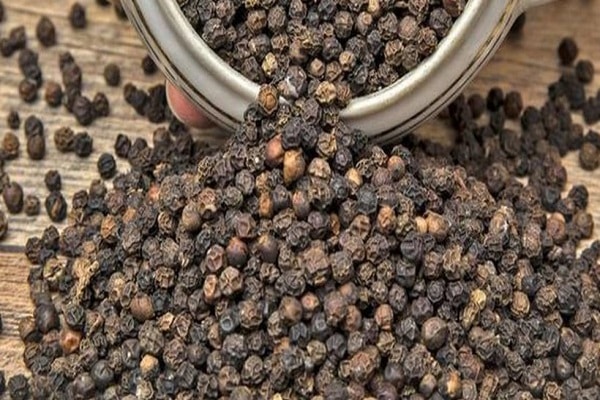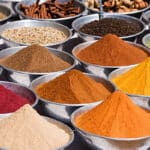Black pepper prices touched $ 6,50 per kg last winter after a gap of a decade, following the easing of COVID-19 restrictions and a rebound in demand. It reached a high of $6.80 per kg on November 24 on fears of a lower crop. The new pepper crop, however, has not let the price down, which is currently in the range of $6,20 to $6,60 per kg in domestic markets.
There is good demand in the domestic markets. Indian production has not been able to keep pace with the emerging domestic consumption, said Cherian Xavier, chairman of All India Spices Exporters Forum. Higher black pepper prices in India have spurred illegal imports. While the Indian variety rules around $6,4 per kg, pepper from other major producing countries like Vietnam, Brazil, Indonesia, and Sri Lanka hover in the range of $3,85 to $5,10 per kg.
Large quantities of Vietnamese and Brazilian pepper have reached the consuming markets of Indian domestic markets like Delhi, Mumbai, Kanpur, Ahmedabad, and Indore. Pepper is also being imported from Sri Lanka by circumventing the import price restrictions through Chennai, Nava Sheva, and Mundra ports and inland container depots in Kanpur and Ludhiana. Despite an import duty of 8 percent, social welfare cess of 2 percent, and minimum import duty charge of $6,27 per kg, imports from Sri Lanka touched 513 tonnes in June this year.
While local Sri Lankan pepper prices are at $5,300 per tonne, Indian prices are around $6,700 per tonne. Vietnamese and Brazilian pepper are also being Imported from Myanmar to India. These pepper consignments are being sold in the North Indian market, traders pointed out. But the arrival of Indian-origin pepper to the local market has thinned in the last few weeks though the harvest season is over. “Farmers could be holding stock in anticipation of higher prices,’’ said Jojan Malayil, CEO of Bafna Enterprises.
Demand is expected to go up with the onset of the festival season in India by October.
In the last few years, the percentage of Indian pepper in exports has come down sharply as prices are higher in the international market. “Nearly 95 percent of the black pepper exports from India is imported pepper after value-addition,” Malayil said. Indian black pepper exports touched 21,882 tonnes in FY22, reaching above 20,000 tonnes after five years. Higher shipments were made possible by the slump in pepper prices in Vietnam, the biggest producer, in the first few months of last year. But in 2022, a slightly lower crop in Vietnam has pushed up prices.
“Higher prices of imported pepper with a huge increase in freight costs have made Indian black pepper export uncompetitive,’’ Xavier said. As a result, shipments have been sluggish in the last few weeks. Shamji said it must be specifically mentioned in each consignment that imported pepper is being re-exported to make it clear to the authorities of the importing country that it is not Indian pepper. The matter was represented to the Commerce Minister during his recent visit to the Spices Board, he said.
Nedspice, a Netherlands-based spice processing and distribution company with branches worldwide, including in Vietnam and India, pegs the global pepper production at 509,000 tonnes in 2022. But with carry-over stock, it comes to 576,000 tonnes above the global demand of 520,000 tonnes. Lower crop in Vietnam due to unfavorable weather is balanced with a good crop in other origins. It further said that the potential slowing of demand on account of sufficient stocks in consuming countries could also offset lower crops in Vietnam. Consequently, the market is fragile and price volatility can be expected, it said.
According to their report, Vietnam’s pepper production will be down by over 6 percent to 188,000 tonnes while that of Brazil, the second-biggest producer, will be up by 10 percent to 98,000 tonnes this year, while pepper output in India, the third largest producer, will increase marginally to 68,000 tonnes.
Source: Money Control











